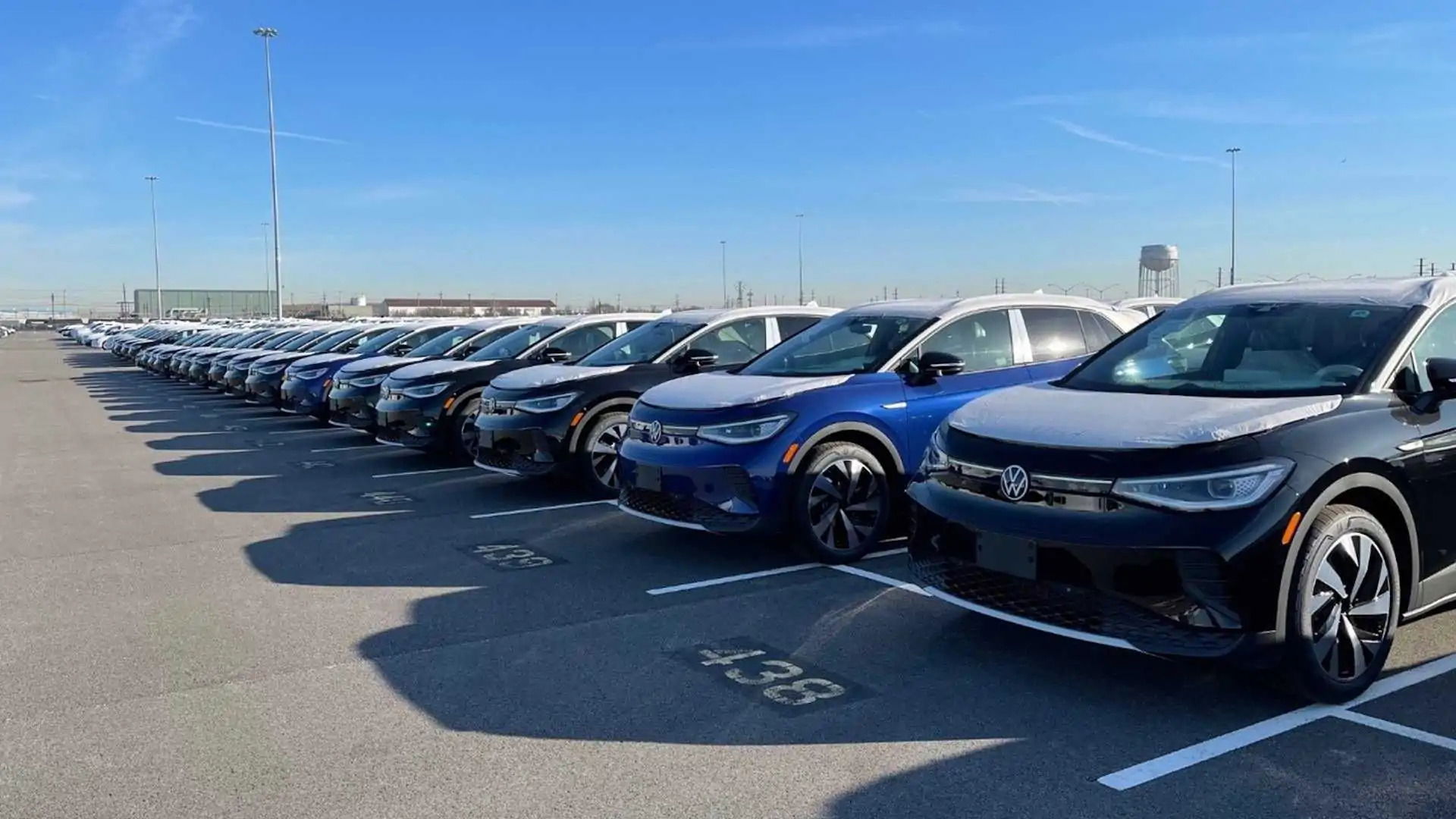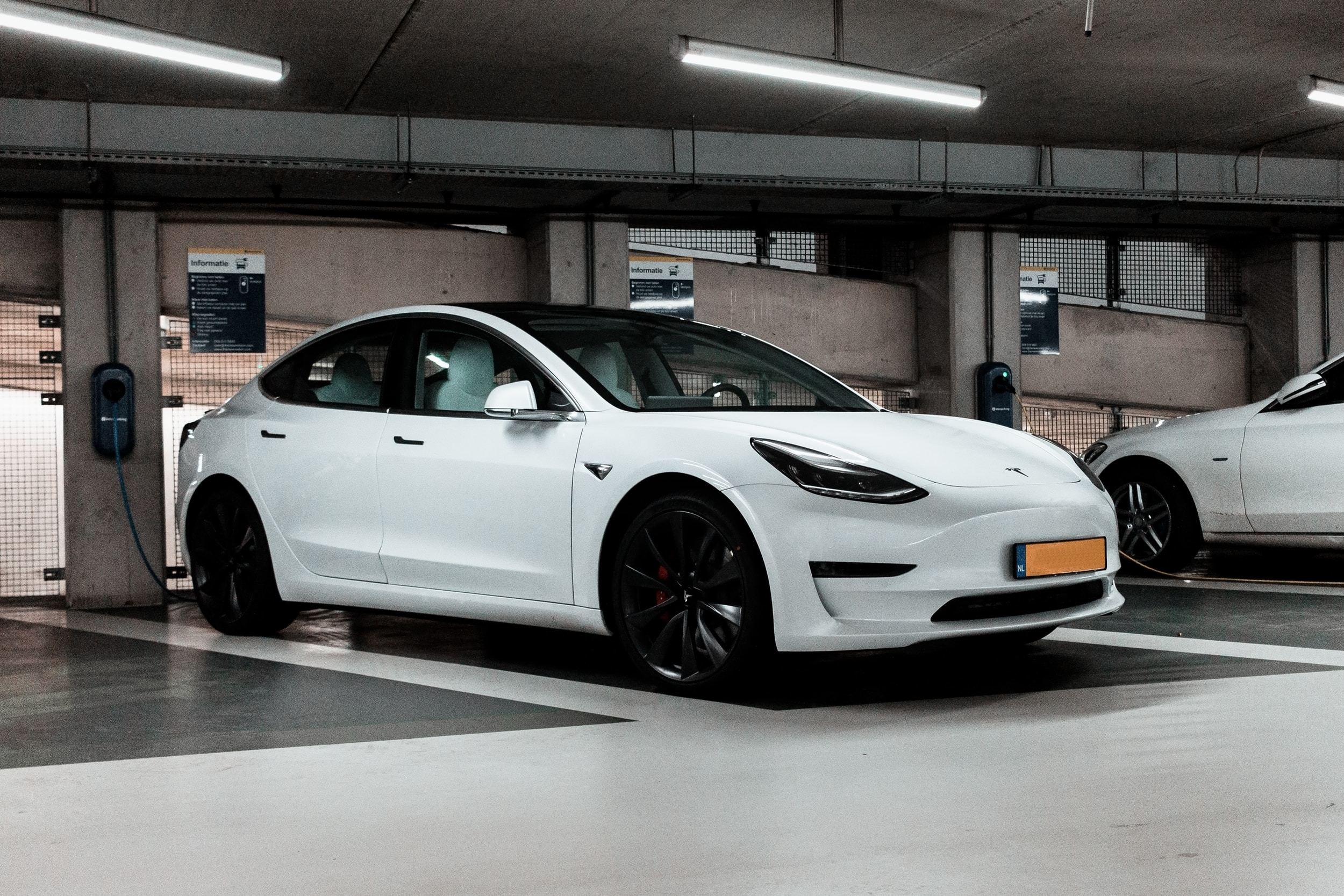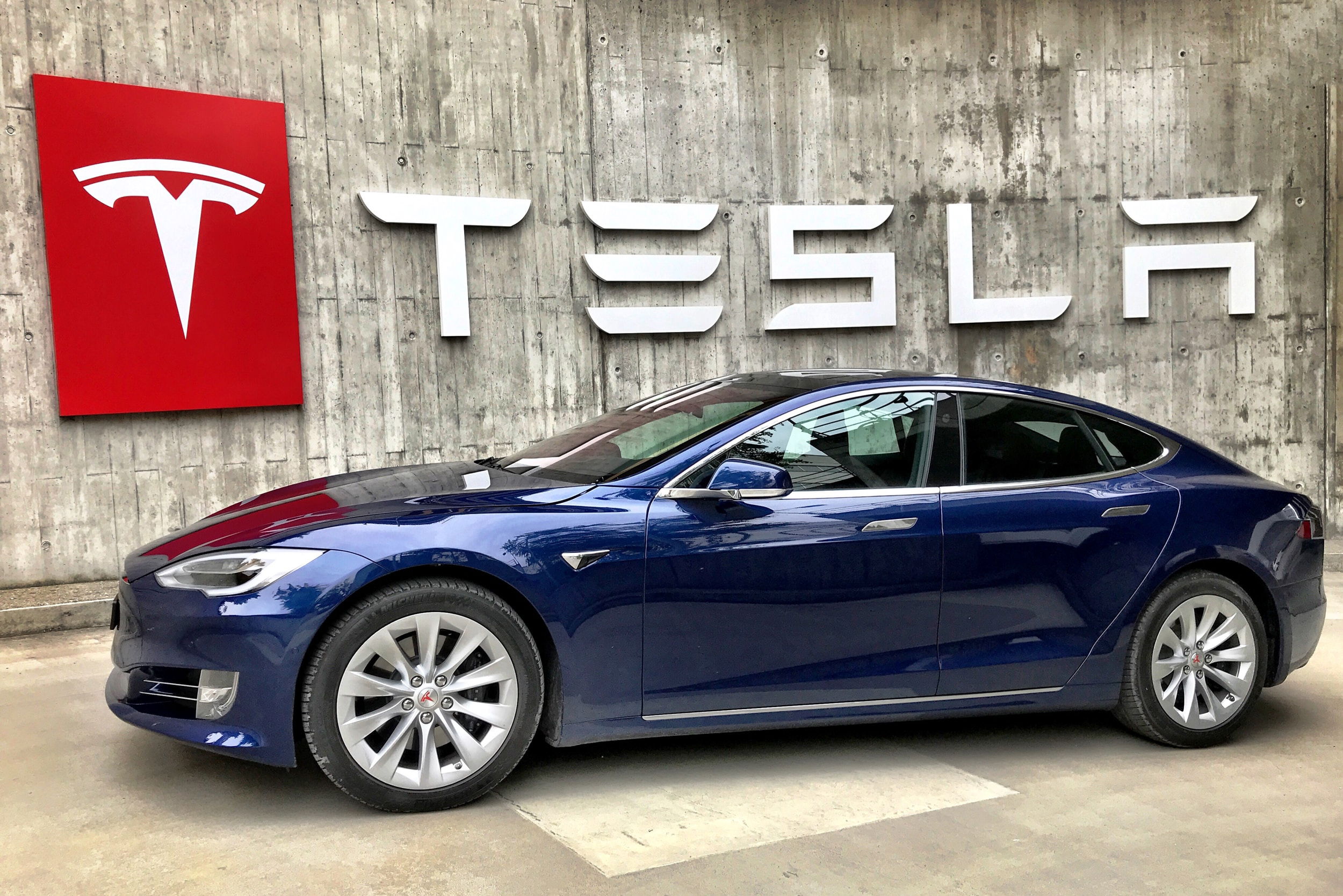Research shows businesses and leasing companies drive the electric vehicle market, inadvertently pushing new models further out of reach of private buyers.
Amidst the promising growth of electric vehicles (EVs) in the new car market, a new concern is emerging for leasing companies, car dealers, and car buyers.
The used car market, already grappling with numerous challenges such as weak consumer confidence, depreciation, and over-supply of certain models, now faces the spectre of ex-fleet EVs. Leasing companies and businesses are increasingly considering the disposal of their used electric cars.
This growing trend poses a potential disruption to the emerging used car market. With technological advancements constantly pushing the boundaries, there is a fear that even relatively young EVs may soon appear outdated.
Despite these concerns, the overall statistics regarding new car registrations seem optimistic. In June 2023, electric car registrations witnessed a remarkable 39.4% increase compared to the previous year.
Furthermore, the year-to-date figures reveal a notable 32.7% growth in EV sales. However, industry experts caution against solely relying on these figures as they may mask the underlying challenges faced by the used EV market.
The increasing number of ex-fleet EVs hitting the market could potentially saturate supply, impacting prices and demand. Additionally, rapid technological advancements in the EV sector pose a risk of making older models less appealing to consumers who are constantly seeking the latest features and innovations.
The Downside Of The Rapid Growth Of EV Technology

This situation raises concerns for leasing companies, as they may face difficulties in offloading their ex-fleet EVs in a market that demands cutting-edge technology and fears obsolescence.
Car dealers also need to navigate the changing landscape to ensure they can offer competitive prices for used EVs without succumbing to heavy depreciation. Amidst these challenges, industry stakeholders are exploring strategies to mitigate the potential disruption.
Efforts are being made to educate consumers about the long-term benefits of purchasing used EVs, such as lower operating costs and reduced environmental impact.
Additionally, leasing companies are exploring innovative leasing models, including subscription-based services and attractive financing options, to entice buyers and maintain a healthy used EV market.
As the EV market continues to evolve, it is crucial for all stakeholders to adapt and find innovative solutions to ensure a sustainable and prosperous used car market. Only by addressing the uncertainties surrounding ex-fleet EVs and instilling consumer confidence can the industry unlock the full potential of the electric vehicle revolution.
The EV Market Depends Heavily On Businesses And Leasing Companies

A closer examination of the new car registration figures reveals an interesting trend: business and fleet registrations accounted for a significant portion of the total EV registrations. In fact, these registrations made up almost 79% (24,953) of the total number of EVs registered.
This proportion has been steadily increasing as private buyers continue to show a preference for petrol and hybrid vehicles. Mike Hawes, the CEO of the Society of Motor Manufacturers and Traders (SMMT), acknowledged this growth in business and fleet registrations.
He highlighted that battery-electric vehicle registrations experienced a notable 39.4% increase, indicating a clear preference among buyers for zero-emission cars.
However, it is the business and fleet sectors that are primarily driving this growth, thanks to attractive fiscal incentives. One of the key incentives driving the adoption of EVs in these sectors is the reduced benefit-in-kind tax that electric vehicles attract.
Currently, EVs are subject to a mere 2% tax, while vehicles like a 1.5-liter petrol Volkswagen Golf face a significantly higher tax rate of, for instance, 30%. This substantial tax advantage encourages businesses and fleets to opt for EVs, contributing to their increasing market share.
Moreover, salary-sacrifice schemes play a crucial role in promoting EV adoption within businesses. These schemes allow employees to lease an EV through their employer at an all-inclusive monthly rate without requiring a deposit.
Additionally, employees participating in such schemes benefit from reduced national insurance contributions. These incentives make electric vehicles an attractive option for many employees, further driving the growth of EVs in business and fleet registrations.
The combination of reduced benefit-in-kind tax rates and salary-sacrifice schemes has created a favorable environment for businesses and fleets to transition to electric vehicles. These incentives not only help reduce emissions but also offer financial advantages to both employers and employees.
As the market continues to evolve, it remains essential for policymakers and industry stakeholders to evaluate and refine these incentives to ensure their effectiveness in promoting EV adoption.
By maintaining attractive fiscal policies and introducing innovative programs, such as charging infrastructure development and additional incentives for private buyers, the industry can strive toward a sustainable and widespread transition to electric vehicles.
Private EV Customers Get The Shorter End Of The Stick

Oversupplying the used EV market While the current incentives have successfully spurred growth in EV adoption within the business and fleet sectors, concerns are arising regarding the potential consequences of this two-speed market.
Experts warn that the existing incentives risk disadvantaging private buyers and creating an imbalance in the EV market. Philip Nothard, the insight and strategy director at services provider Cox Automotive, emphasizes the significance of the fleet market for car manufacturers aiming to sell EVs in large volumes.
He points out that new entrants like BYD are targeting the fleet market by offering attractive deals such as £199-per-month lease agreements and low deposits. However, the absence of clear incentives for private buyers presents a challenge.
Most private buyers can only afford to purchase used EVs, and without sufficient support, they may be reluctant to transition to electric vehicles. This discrepancy in incentives between the fleet and private markets raises concerns for car manufacturers and leasing companies.
They now face the task of effectively managing the influx of ex-company EVs into the used car market. Oversupplying the market could lead to a significant drop in carefully calculated residual values, making it difficult for retail buyers to afford these vehicles.
To address this challenge, industry stakeholders must carefully balance the supply of ex-company EVs in the used car market. This requires implementing strategies that prevent oversupply without discouraging the transition to EVs in the fleet sector.
Finding the right equilibrium will be crucial in maintaining stable residual values and ensuring affordability for retail buyers. Additionally, it is essential for policymakers and industry players to consider the needs of private EV buyers.
Introducing targeted incentives, such as subsidies or tax benefits, for individuals purchasing new or used EVs could encourage wider adoption and create a more equitable market. By providing support and addressing the affordability gap, car manufacturers and leasing companies can facilitate a smoother transition to electric vehicles for both fleet and private buyers.
Addressing The Threat Of Fleet Dumping To The Emerging Electric Vehicle Market

Striking the right balance between fleet and private markets, along with implementing comprehensive incentives, will be key in sustaining the growth of the EV market while avoiding potential pitfalls associated with oversupply and affordability challenges.
Dylan Setterfield, head of forecast strategy at CAP HPI, said: “Values are almost 7% lower than we predicted they would be three years ago and there is a genuine concern at the number of ex-fleet EVs coming onto the market, but their volumes are relatively small and, as long as retail demand remains in step, we don’t expect a crash in values to occur.”
The concerns surrounding weak residual values of certain EVs in the used car market have prompted alarm bells from car finance companies. Paul Burgess, CEO of Startline Motor Finance, highlights the turbulence experienced by the used EV market over the past year and the negative impact on dealers' stock values.
Burgess raises a valid concern about the impending influx of ex-company car EVs, which are expected to enter the market in significant quantities. Without a corresponding increase in demand, the values of these vehicles could suffer further, exacerbating the challenges faced by dealers and car finance companies.
However, Cap HPI, a leading authority in tracking used EV values, holds a more optimistic view regarding the prospects of these vehicles. They believe that the situation may not be as bleak as some fear.
Cap HPI's representative, Setterfield, points to the measures being taken by fleets to manage their disposals and avoid flooding the market. Setterfield cites Polestar as an example of a company taking proactive steps to address the potential oversupply (‘dumping’) issue.
Polestar, an electric vehicle manufacturer, retrieves ex-lease cars and sells them directly from its website. By managing the resale process internally, Polestar aims to regulate the flow of ex-fleet EVs into the used car market, potentially minimizing the negative impact on residual values.
These efforts by fleets and manufacturers to control the supply of used EVs demonstrate a recognition of the challenges posed by oversupply. By implementing such strategies, they aim to maintain stability in the used EV market and prevent a drastic decline in vehicle values.
While concerns persist among car finance companies, the actions taken by industry players like Polestar offer a glimmer of hope. Through careful management and targeted sales approaches, it is possible to mitigate the negative effects of a surge in ex-company EVs flooding the used car market.
Nevertheless, ongoing monitoring and collaboration between stakeholders will remain crucial to ensure a balanced supply and demand dynamic, thereby safeguarding the residual values of used EVs and sustaining a healthy marketplace for both dealers and buyers.
Acknowledging the financial implications of disposing of ex-fleet EVs in bulk, the British Vehicle Rental and Leasing Association (BVRLA) states that its members are adopting more strategic approaches to manage this challenge.
Recognizing the high cost of EVs and the potential severity of mass disposals, leasing firms are exploring alternative methods to regulate the flow of vehicles into the market. One such approach involves drip-feeding cars into the market gradually.
This measured release of used EVs helps prevent oversaturation and the subsequent negative impact on residual values.
Another tactic is to take back these vehicles and re-lease them to customers who are attracted by the lower monthly payments associated with used EVs. For instance, leasing a used Jaguar I-Pace, which is cheaper than an F-Pace, offers both cost savings and lower operating expenses.
The Impact Of Brand Allegiance On The EV Market

The changing landscape of brand allegiance also plays a role in managing used EV supply. The BVRLA notes that people are becoming more open to considering alternatives to traditional luxury brands. Manufacturers like Kia and MG are gaining traction as viable options in the market, further diversifying the choices available to potential EV buyers.
Furthermore, adopting more flexible lease arrangements can contribute to maintaining healthy residual values. Lease terms as short as three to six months encourage continuous circulation of vehicles, preventing a surplus in the used EV market.
This approach benefits both leasing companies and buyers, ensuring a steady flow of options while safeguarding the value of these vehicles. By implementing these strategies and adapting their business models, leasing companies can navigate the challenges associated with the disposal of ex-fleet EVs more effectively.
These approaches not only help manage supply but also provide customers with attractive options, lower costs, and greater flexibility. As the market continues to evolve, it is essential for industry stakeholders to remain agile and explore innovative solutions to maintain a sustainable balance between supply and demand in the used EV market.
By doing so, they can mitigate potential risks and ensure a healthy resale environment for EVs while offering consumers accessible and cost-effective options for transitioning to electric vehicles. By retaining an EV within their leasing "ecosystem," companies have the opportunity to generate continued revenue from it, independent of fluctuations in vehicle values.
This shift toward becoming mobility operators rather than traditional fixed-term leasing operators is proving beneficial for leasing companies. Not only does it enable them to adapt to the volatility of EV residuals in the short to medium term, but it also helps mitigate the risk of EV dumping and its detrimental impact on residual values, ultimately benefiting retail buyers.
In this evolving landscape, leasing companies are embracing a more dynamic approach, aligning their business models with the changing needs and demands of the market. By transitioning into mobility operators, they can provide customers with a wider range of options and services beyond traditional leasing, ensuring a sustainable and profitable future.